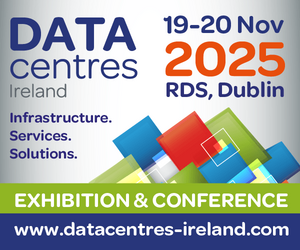Imagine having an enterprise where there are 22 branches with a corporate headquarters and a central operations hub.
With double digit growth and a turnover on the healthy side of €20 million in 2005, this is a sizeable group with a deep reliance on technology. Now imagine that you are the only IT person in the organisation. Meet Bob Farrelly, Group IT manager of Snap Corporate Ireland.
Snap Printing started out in Australia in the early part of the last century, but had already begun something of a revolution in the print business in the 1960s by pioneering ‘quick printing’.
Organised on a franchise model, Snap Printing Ireland was started in 1984, by Michael Kearney. While Kearney remains chairman, Muiris Murphy is group managing director. A relatively recent addition, “Muirish, started about three weeks before I did,” said Farrelly.
Though a relatively short time in the chair as IT manager for the group, Farrelly has already established a regime that seems more akin to the upper levels of enterprise.
Sole operator
“There is just myself in IT here. We have support companies that we use, mostly small companies, but they provide me with a service I can’t get from some of the larger companies,” explained Farrelly. This ultimate expression of outsourcing means that Farrelly must act as the CIO, partnering with the business to achieve competitive advantage, but must also partner with outsourced people to deliver the service and support to keep the group functioning in a technically demanding business. “I am in an unusual position with two hats. At weekly board meetings, I am a CIO determining strategy and direction. But the other hat is dealing with users and my ‘hands on’ heritage has helped with that.”
Those users are the independent franchise owners who run the more than 20 centres around the country. Each one is a manager of their own centre and results in a situation, as Farrelly puts it, where “in one respect it’s like having 22 CEOs”. Each manager must be dealt with as such, and some are more technically adept than others, but all need the same tools and support to underpin their business.
Shipping start
Though Farrelly refers to his hands on nature with technology, he did not start his career in IT. “I started in the shipping and freight forwarding. I took a course which was the first available in Ireland and it included a year’s marketing.” Though, Farrelly adds, he always had other interest, “I have always been technically inclined”. However, shipping and freight forwarding was a stressful job and Farrelly experienced something of that directly. “I experience some health issue which were common among managers [in that industry]. Then I had a car crash and while recuperating I decided on a change of career.”
That change would see Farrelly break into electronics, though not without some resistance. “I went to FÁS, or Anco as it was then, and did a City and Guilds course in electronics. They had age concerns as I was already 21!”
Despite what may have been perceived as advanced years for the time and the topic, Farrelly progressed rapidly, developing technical skills as he went. He began working in process control electronics, in the days, he said, before microprocessors. “I did some microprocessor courses in UCD and then went into programming. I bought a Spectrum ZX80 with 1kb of memory and no storage.”
Solution engineer
Keeping current with the technology, Farrelly, was able to engineer solutions when they were not available. “Then, nearly all plant machinery had some kind of microprocessor or early computer. Some of the digital machines had core memory. I designed an interface with a tape drive and a Commodore 64. I did a lot with CAD/CAM too.”
“I used to programme and create database systems for customers. I did one for Tallaght Hospital. It was an Access database that tracked the glass for the windows during building. The contract would have been impossible without it.”
“I did more specialised systems then, before I went on to Modus Media. That was the first time I had a large support team.”
“I worked with Modus Media for a number of years at its print plant in Clonshaugh. That was part of a large multinational, though we were only one of its two print plants in the world. Though, I have also worked as a freelancer supporting large business. So the model for the multinational and the franchise group are very different.”
Business knowledge
The exposure to technology at such a critical time in the development of IT systems has left Farrelly with a deep understanding of technical issues, but there were other areas, such as business knowledge, that did not see the same level of development. “That is still something I am developing. To a certain degree, I had been shielded from it before. The biggest challenge was getting over that hurdle, to understand the business.”
On joining Snap, Farrelly was among a few new key appointees and was tasked with a transformation of the IT organisation. “There has been a complete change of management at KM Franchising, which owns the franchise rights for Snap. So we came in and had to start afresh and take a roots look at the way the whole organisation was run.”
“We had to look at the systems because some centres had broadband, some had ISDN. We had to have a good hard look at what was going on in all the centres. We have now got 22 centres in Ireland, with independent business people who run them.”
Outside the box
Farrelly’s background has given him some insights into technology and tools that may not be apparent to more traditionally trained IT managers. “We use Firstclass instead of Outlook, because Outlook is one of the biggest sources of issues such as viruses and other problems.”
“I was introduced to it through the Open University, when I did a course some years ago. There is a company here called Route2 Solutions who support the product. It is excellent because we don’t have to worry about the same problems and issues that people have with the likes of Outlook.”
Snap Ireland does not work in isolation from its Australian parent. Print Perfect Elite (PPE) is a system that comes from Australia but is unique to the Snap group. “That does all of our quoting, our job production tracking and invoicing. That has been with the Snap centres for a number of years.” The traffic in technology, however, is not all one way, as a VNC based management system pioneered in Ireland was also adopted in Australia.
Customer relationship management is also a key tool for Snap. “In print, you loose customers through lack of communication. You are going to choose who you remember.”
CRM tools
“Communication is key and so CRM is vital. Quotes can be followed up when they are entered into the CRM system. We are an ISO accredited group so we have to do delivery follow up. Also, from the CRM system we can get reports that support the ISO auditing process. There is also help with invoicing as delivery follow up means if there is a problem it is known before it is invoiced.
It helps because there is less negative interaction.”
“It is more expensive to get new customers than it is to retain existing ones.
In printing, often the value of a new customer is less than that of an old one.” In the print business, according to Farrelly, the ratio can be as much as 2-1 for value when comparing existing customers with new.
Goldmine is the CRM tool of choice in Ireland for Snap, though Farrelly admits that penetration in the Australian group is not widespread.
“We use Goldmine CRM and that integrates with PPE but there are plans for better integration.”
The value of maintaining relationships is not solely focused externally for Snap. “I have built relationships with owners and have the cooperation to gather the sales data we need.” That careful building of relationships extends across the range of duties for Farrelly, whether it is with the board, his support companies, or the managers.
Relationship building
“I had to build relationships, using the right communication, and build trust in speaking to the board. There are a lot of things that influence non-technical people in the paths to follow. I am trusted to take the solutions forward.”
Farrelly cites a recent look at Google rankings, where he had to illustrate the processes involved for the board but was still tasked with making a decision.
This level of trust extends outward to the support infrastructure too. “Custom Computers are one company that we use for our maintenance. John Granger is the MD there and he has interrupted staff on a Saturday, opened up a shop and brought stuff down to a centre where I have been stuck.” This close relationship, combined with a deep understanding of the needs of the centre managers, has allowed Farrelly to accomplish the management requirements to transform IT for the group while keeping the business moving.
“What I have learned though is that, with such a diversity of individuals within the group, you need to look at the lowest common denominator and try to keep things simple.”
“You can over complicate things, however. Although we are a large group, you can have a start-up centre with two people in it. You can’t throw a lot of systems at a two-person operation. So the systems need to be scalable and they need to be easily understood with a minimum of maintenance necessary.”
Citing backups as an example of where problems have arisen, Farrelly began a process whereby drive mirroring with local and internet backup system was implemented across all centres. This was followed with a strict regime of backup restores once a month in each centre to ensure that the system worked because, as Farrelly succinctly puts it, “until you restore, you don’t know”.
With the back ups in place, each centre was equipped with broadband, a standardised fitment of network switchgear and Cat6 cabling. All centres communicate with the Baldonnell operations hub over VPN. “We are probably half way through the full plan of change,” said Farrelly.
Professional groups
With the hectic pace of development of the IT infrastructure and the outsourcing model, it may be unsurprising that Farrelly is not a member of professional groups related to the role. However, as he is such a relatively short time in the chair, there is time yet for such things. Farrelly says that he will be looking at the Association of Information Managers Ireland, as he sees the benefits of peer discussion and interaction, especially as the role of the CIO moves closer toward working with the board. Though he admits that the management team knew what they were looking for in an IT manager, Farrelly reckons that his knowledge and experience has also effected change in the definition of the role in the organisation.
Full ahead
With the group’s IT plan well underway there is still much to do. The PPE system licence of 10 years is up in two, and its successor will be on a SQL database. Goldmine, too, is moving in that direction as the current version runs on Dbase. However, Farrelly is under no illusions as to the nature of his role. “The system needs to work without me. My role is to provide pathways and leadership.”








Subscribers 0
Fans 0
Followers 0
Followers